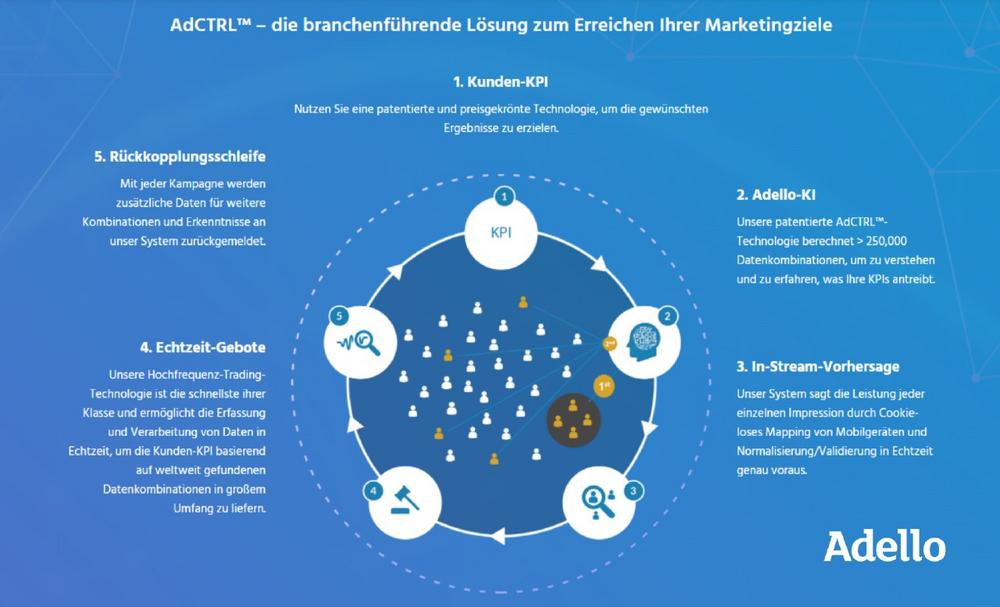
Technology for a Cookieless and Privacy-Friendly World
The new regulations provoked concerns in advertising fields. This enactment would mean that marketers won’t be able to collect the users’ data the same way as previously. Many businesses were based on the 3rd party cookie collection. Facebook issued a warning that the impact could lead to a double-digit decline in their advertising revenues. Still today, most MarTech companies rely on cookies in some form. Google announced in January 2020 that it would eliminate 3rd party cookies from Google Chrome in 2023 (the timing has since been delayed). So what’s happening in the industry in 2022?
Cookieless world
Cookies are a relict from the desktop world. They are “a simple technology” used to collect rich user online behavior data, which helps brands learn about customers and shape targeted offers for them. However, at what cost? Nowadays, customers are more concerned about who collects their data, what part of their life is tracked, how companies use this information, and who they sell it to. The main problem of cookies is not personalization: customers don’t mind receiving advertisements and product offers that match their needs, but the breach of confidentiality.
In a visionary move by our founder Mark E. Forster, Adello, since its inception (in 2008), built a targeting technology that never relied on cookies. His insight that mobile marketing deserved a better solution than the prevalent desktop-goes mobile approach of relying on just cookies and clicks stemmed from his background in developing mobile apps and his keen interest in analysis and data. While not relying on cookies proved more complex cookieless approaches are now in demand by all major MarTech companies.
Because for a good reason, the authorities around the world consider 3rd party cookies unethical and contradictory to their privacy data regulations.
What are the expected changes in a cookieless world, and how will 3rd party cookies policies look like?
The new regulation requires asking users about their consent before storing or accessing information. The principle of user consent is freedom, specification of information, and it has to be based on an explicit affirmative action. EU Data protection authorities are aware that 3rd party cookies restriction can complicate the work of businesses, which used this technology before. Therefore, authorities released recommendations on the alternative methods to get user consent.
EU recommendations.
Previously, visiting websites, users could see a pop-up banner where one could choose to accept cookies or decline with minimum to no additional information about cookie policy. Now EU websites should comply with the following three conditions:
– To inform the user that the website uses cookies – Provide information on how cookies work – Obtain consent before storing cookies on the user’s device
Many companies have already started reforming their websites. According to the report, cookies are down by 22% among news websites. However, the majority of the websites are still using 3rd party cookies and do not meet the GDPR requirements yet. Advertisers working with non-compliant publishers put themselves at risk.
Alternatives
We are witnessing how the era of cookies is coming to an end. However, that doesn’t mean that companies will have to move away from personalization. Indeed, it’s high time for marketers to find an efficient but, at the same time, ethical approach.
The good news: several effective alternatives do exist. Adello, for one, has never used 3rd party cookies because AdCTRL AI-targeting is based on other, more sustainable, and ethical methods of data collection. But let’s first look at the options:
1) Probabilistic methods
For probabilistic methods, the systems detect different sorts of data points in order to identify the personality as best as possible. This is usually achieved by blending a combination of observed behavior with “soft identifiers”.This includes device type, publishers visited, on-site behavior, and the IP address. This method aims to provide tracking and attribution.
Deterministic data is hard to collect. It may happen that tech systems are not able to match identities. The reason might be that the user is unlogged or some piece of deterministic data is currently not available. Another challenge is that in order to perform well, it quickly again means identifying a unique user, which in turn is not privacy (PII) compliant. It’s a thin line in which companies such as Drawbridge in the US, and recently, 1+X in Switzerland are toeing.
It is still unclear if those solutions are fully “non-cookie based” or whether they rather are a combination of methods. However, one thing is clear: probabilistic methods are technically challenging, and the ensuing outcome is inconsistent at best. Many initial clients have moved away from probabilistic methods in the past years.
2) Unified ID 2.0
In the partnership with Unified ID 2.0, Trade Desk released their own solution for the post-cookies era. Since popular web browsers such as Safari, Firefox, and Google Chrome rejected the cookies, Iteration 2.0 will replace the use of third-party cookies with hashed and encrypted email addresses.
The developers claim this ID will remain open and, moreover, will implement significant upgrades to consumer privacy and transparency. This framework can be used by all companies, not just those working with The Trade Desk.
However, this method mirrors the functionality of cookies too. That is the reason Google criticizes Unified ID 2.0, claiming it might be a not sustainable long-term investment.
3) Advertising ID Consortium (mainly IDentity Link IDL by LiveRamp)
The Advertising ID Consortium is an open and independent group, which is operated by representatives from well-known AdTech companies, such as Index Exchange, LiveRamp, The Trade Desk, dataxu, and others.
The Advertising ID Consortium provides privacy-conscious and people-based interoperability for the advertising ecosystem. The method they suggested is cookies ID utilization via AppNexus’ domain as well as a people-based identifier supplied by LiveRamp’s Identity Link. The idea is to hash login-email data. Also, apply the same hashing method whenever a user receives an advertising email and clicks a link. That hashed information will create an ID that will be captured in local storage and will be turned into a 1st party cookie.
Speaking about disadvantages, same as with previous methods, this solution also uses cookies.
4) Apple SKAdNetwork
Apple has a range of solutions and one of them is SKAdNetwork (or SKAN). SKAN allows accurate attribution of app installs. This framework includes three main entities: Publishing app, the ad network which signs the ad, and the app advertisement. The important thing to understand is that the entire process is unrelated to Apple’s device identifier for advertisers (IDFA).
After the iOS 15 was released, the new futures SKAdNetwork appeared. The range of developers and marketing measurement platforms, such as Appsflyer, Adjust, Kochava, Branch, and others, will be able to obtain SKAdNetwork, install validation postbacks, and perform their campaigns on their own.
There are several disadvantages of SKAN. Firstly, it only works for in-app, and secondly, it is designed for iOS. Moreover, the data presented is limited to the 100 campaigns for an app or a network. However, Adello uses SKAdNetwork for in-app solutions and sees this framework as reliable and future-proof.
5) Adello: AdCTRL™ & Adello Instant Classification «AIC»
Adello has always been committed to protecting user privacy. We comply with all applicable data protection legislations, including the European Data Protection Regulations (GDPR), California Consumer Privacy Act (CCPA), and Brazilian General Data Protection Law (LGPD).
Adello operates AdCTRL™, which is a transparent and neutral mobile advertising platform. AdCTRL is based on Adello’s patented real-time AI technology. Data within AdCTRL falls into three main dimensions: 1. Content (publishers): Adello continuously crawls and classifies publisher data (mobile sites, apps) to understand the environment, keywords, ratings of content. This provides a better picture of whether or not an app is trustworthy. It only has 2* ratings? The app is Indonesian but the ad slot is being offered in German? Understanding the content allows deciding whether the placement is actually worthwhile.
2. Context (temporal and spatial data): this relates to the when and where an ad is being placed. Because the time of day might very well be relevant to an ad for coffee. Also, the location of where the ad is being offered contains additional data such as current weather or location type, which might say something about the behavior of the device in question (Adello has drawn polygons of all major airports, train stations, and most retailers). Is the location a coffee shop, an office building, or a residential area? That might matter.
3. Behavior: the most important dimension is how users (inter-)act. This goes far beyond click. It starts with technographic information (which device is being used with which firmware and browser), to connection speed, response, and dwell times, to interaction with content and ads (i.e., swipes and clicks). This provides a good understanding of interests and relevance of topics.
AdCTRL is used for real-time large-scale data processing. As the client-base is across the main regions EMEA, APAC, and in the US, distinct trends and behavioral patterns can be observed, which allows deriving stable models based on cross-cultural behavioral consistencies. The latest generation of AdCTRL provides a robust and future-proof targeting framework.
Adello Instant Classification AIC is a new simplified version of the more elaborate classification used in AdCTRL. The key difference is that AIC leverages the power of in-stream data processing to instantly classify users into just three brackets (age, gender, interest) without the need to tap into all the historical data of AdCTRL. It largely ignores before and after. This reduction results in a more coarse but faster identification while retaining a high level of accuracy – it typically remains superior to current probabilistic methods.
Bottomline
Today there are even more alternatives, and, for sure, more will appear soon as the companies would demand the cookieless solutions. Eliminating the 3rd party cookies is not the end but the new beginning of a more ethical, sustainable, and privacy-friendly approach in marketing. By choosing the right tools and adapting before stricter laws come into effect, you can win time and gain competitiveness.
Adello Group AG
Forchstrasse 32
CH8032 Zürich
Telefon: +41 (44) 500-3150
Telefax: +41 (44) 500-3154
http://www.adello.com
E-Mail: luc.reinert@adello.com
![]()



